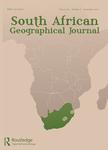版权所有:内蒙古大学图书馆 技术提供:维普资讯• 智图
内蒙古自治区呼和浩特市赛罕区大学西街235号 邮编: 010021

作者机构:Department of Geography Universiry of the Witwatersrand P.O. Wits 2050 South Africa
出 版 物:《South African Geographical Journal》 (S. Afr. Geogr. J.)
年 卷 期:1991年第73卷第2期
页 面:69-76页
学科分类:0303[法学-社会学] 07[理学] 0708[理学-地球物理学] 0705[理学-地理学] 0813[工学-建筑学] 0704[理学-天文学] 0833[工学-城乡规划学]
摘 要:The late 1940s were formative years in the establishment of Dube township and in demarcating the pattern of urban African administration in South Africa. The African housing crisis in Johannesburg prompted the Council to lead the way in implementing a new housing policy for the small African population who could afford home-owership, and who might be tempted to relocate voluntarily from the Western Areas. In the event, the Dube project attracted very few middle-class Africans, most of whom wanted freehold tenure and regarded the United Party s offer of a 99-year lease with suspicion. Fears for security of tenure were vindicated when the new apartheid Government acted on their position that urban Africans were temporary migrants: leases in Dube were restricted to 30 years duration and were made non-renewable. Although segregationist ideology had never allowed Africans to escape racial zoning entirely, under apartheid the development of a propertied African middle-class was effectively nullified by denying Africans freehold title, or even long leaseholds, in white urban areas. Under the sway of an increasingly repressive ideology, the homogeneity of Soweto s residential landscape was assured. © 1991 Taylor & Francis Group, LLC.